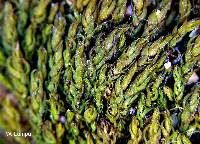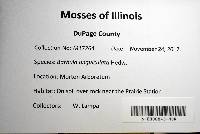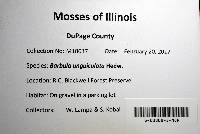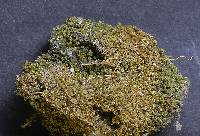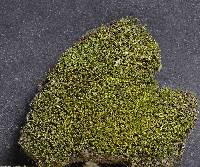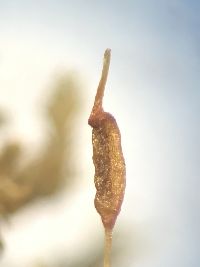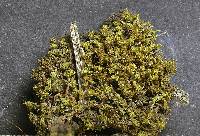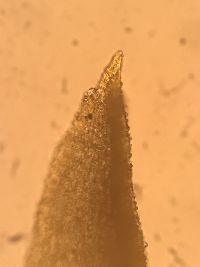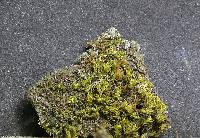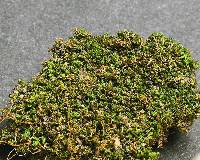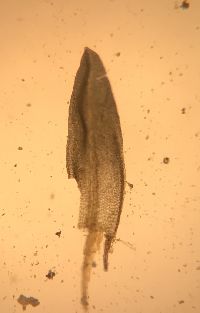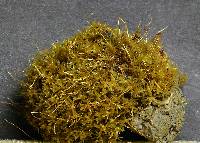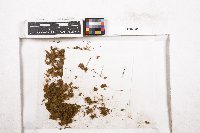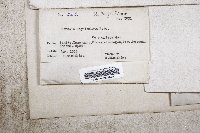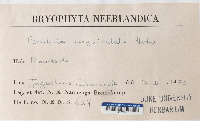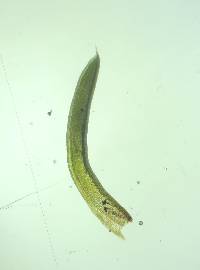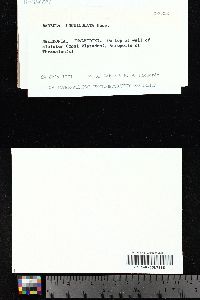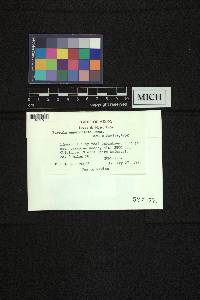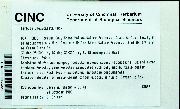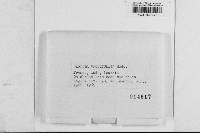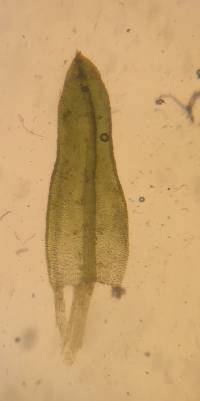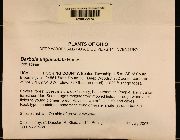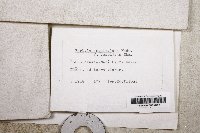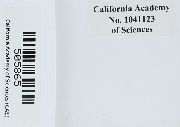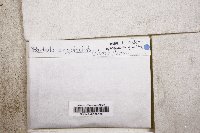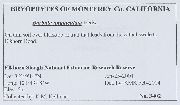
Consortium of Bryophyte Herbaria
- building a Consortium of Bryophytes and Lichens as keystones of cryptobiotic communities -
|
|
|
|
Family: Pottiaceae
barbula moss
[Barbula amoena Schumach., moreBarbula apiculata Hedw., Barbula aristata (Dicks.) Brid., Barbula barbata (Curtis ex With.) Schleich., Barbula brachypus Brid., Barbula cuspidata Schultz, Barbula dubia Schumach., Barbula ericetorum (Dicks.) P. Beauv., Barbula fallax var. barbata (Curtis ex With.) Lesq., Barbula fastigiata Schultz, Barbula gattefossei P. de la Varde, Barbula himantina Besch., Barbula incerta Schumach., Barbula indigens (Renauld & Cardot) Renauld & Cardot, Barbula linoides (Hedw.) Brid., Barbula microcarpa Schultz, Barbula mucronulata (Dicks.) F. Weber & D. Mohr, Barbula nervosa Crome, Barbula ochracea Broth., Barbula saundersii Cardot & Thér., Barbula setacea Grav., Barbula stricta Hedw., Barbula subunguiculata Schimp. ex Besch., Barbula tokyensis Besch., Barbula trichostomifolia Müll. Hal., Barbula unguiculata f. apiculata (Hedw.) Mönk., Barbula unguiculata f. cuspidata (Schultz) Mönk., Barbula unguiculata f. fastigiata (Schultz) Mönk., Barbula unguiculata f. obtusifolia Mönk., Barbula unguiculata var. apiculata (Hedw.) Bruch & Schimp., Barbula unguiculata var. aristata (Dicks.) Brid., Barbula unguiculata var. brachypus (Brid.) Müll. Hal., Barbula unguiculata var. cuspidata (Schultz) Brid., Barbula unguiculata var. dubia (Schumach.) Brid., Barbula unguiculata var. fastigiata (Schultz) Huebener, Barbula unguiculata var. microcarpa (Schultz) Huebener, Barbula unguiculata var. trichostomifolia (Müll. Hal.) P.C. Chen, Bryum aristatum Hedw., Bryum barbatum Curtis ex With., Bryum ericetorum Dicks., Bryum linoides Hedw., Bryum mucronulatum Dicks., Bryum unguiculatum With., Dialytrichia canariensis Bryhn, Dicranum laxum Brid., Didymodon mildei Schimp., Hyophila sieboldii Besch., Orthopyxis aristata (Dicks.) P. Beauv., Orthopyxis barbata P. Beauv., Streblotrichum unguiculatum (Hedw.) Loeske, Syntrichia ericetorum (Dicks.) Brid., Tortella himantina (Besch.) Broth., Tortula amoena (Schumach.) Brid., Tortula apiculata (Hedw.) Turner, Tortula aristata (Dicks.) Sm., Tortula barbata (Curtis ex With.) Sm., Tortula cuspidata (Schultz) A. Chev., Tortula dubia (Schumach.) P. Beauv., Tortula ericetorum (Dicks.) Sm., Tortula linoides (Hedw.) P. Beauv., Tortula mucronulata (Dicks.) Turner, Tortula stricta (Hedw.) P. Beauv., Tortula tenuis P. Beauv., Tortula unguiculata (Hedw.) P. Beauv., Tortula unguiculata var. apiculata (Hedw.) Wilson, Tortula unguiculata var. cuspidata (Schultz) Ångström, Tortula unguiculata var. fastigiata (Schultz) Wilson, Tortula unguiculata var. microcarpa (Schultz) Ångstr., Trichostomum indigens Renauld & Cardot, Trichostomum linoides (Hedw.) Brid., Trichostomum pensylvanicum Spreng.] |
Stems: 1–2 cm. Leaves: firm when wet, long-ligulate to broadly lanceolate from an oblong base, 1–2.5 mm, base often oblong and widened, not strongly sheathing, margins recurved in the proximal 1/2–2/3, rarely to near apex or plane, apex broadly acute to rounded; costa excurrent as a short or long mucro, seldom muticous, abaxial costal surface with scattered solid papillae, hydroids present; distal laminal cells firm-walled, quadrate, 8–12 µm wide, 1:1, papillose. : Specialized asexual reproduction absent. Perichaetial: leaves weakly differentiated. Seta: 1–2.5 cm. Theca1–2.5 mm. Spores: 8–11 µm. Phenology: Capsules mature in winter and early spring, occasionally summer or fall. Soil, sand, gravel, sandstone, granite, limestone, walls, roadcuts, paths, lawns, ditches. low to high elevations (50-2700 m). Alta., B.C., N.B., Nfld. and Labr. (Nfld.), N.W.T., N.S., Ont., P.E.I., Que., Sask., Yukon, Ala., Alaska, Ariz., Ark., Calif., Colo., Conn., Del., D.C., Fla., Ga., Idaho, Ill., Ind., Iowa, Kans., Ky., La., Maine, Md., Mass., Mich., Minn., Miss., Mo., Mont., Nebr., N.J., N.Mex., N.Y., N.C., N.Dak., Ohio, Okla., Pa., R.I., S.Dak., Tenn., Tex., Utah, Vt., Va., Wash., W.Va., Wis., Wyo., Mexico, Central America, South America, Europe, Asia, n Africa, Australia. Barbula unguiculata is common in eastern North America and Europe, and elsewhere in the North and South Temperate zones, but rare in the tropics and the Arctic, with, for instance, only two known sites in Mexico and a single one north of the Arctic tree line. The leaves are often blackened. Forms with strongly mucronate leaf apices have been referred to var. apiculata though modern authorities generally treat this as a form. Barbula indica is often confused with this species, but differs immediately in the leaves conduplicate but not contorted when dry, with plane or weakly recurved margins, and prorate abaxial surface of the costa. Barbula convoluta is similar but has plane margins, costa not excurrent as a mucro and seta yellow rather than reddish brown. |
|
|
|
Powered by Symbiota.




